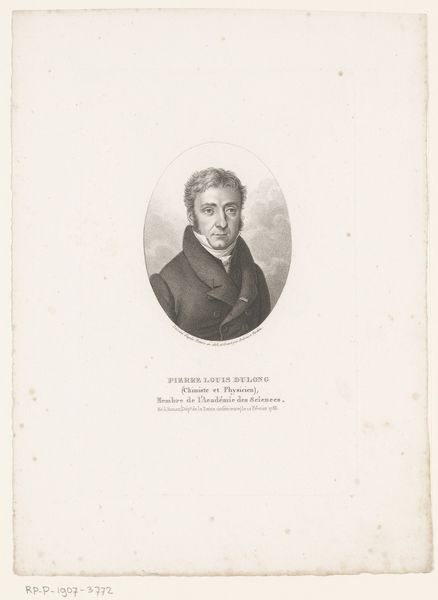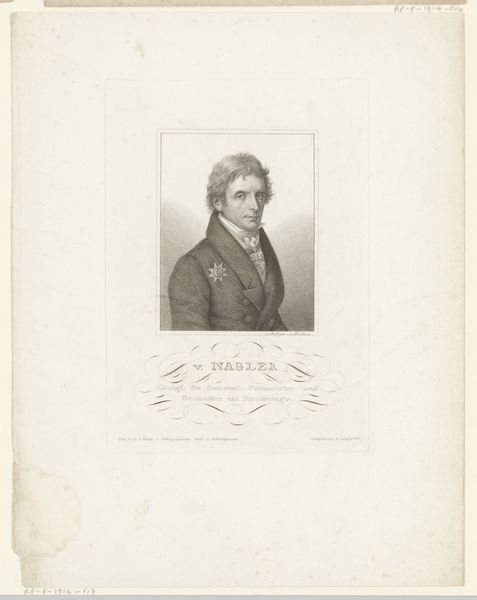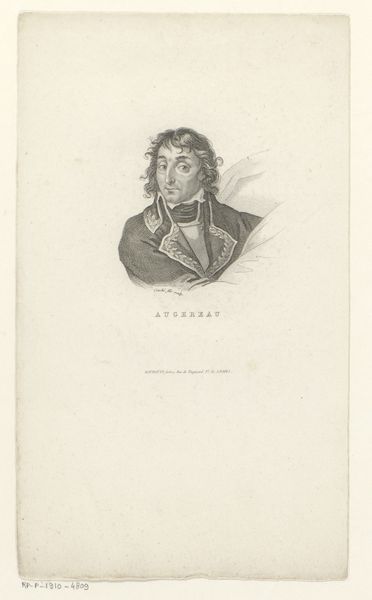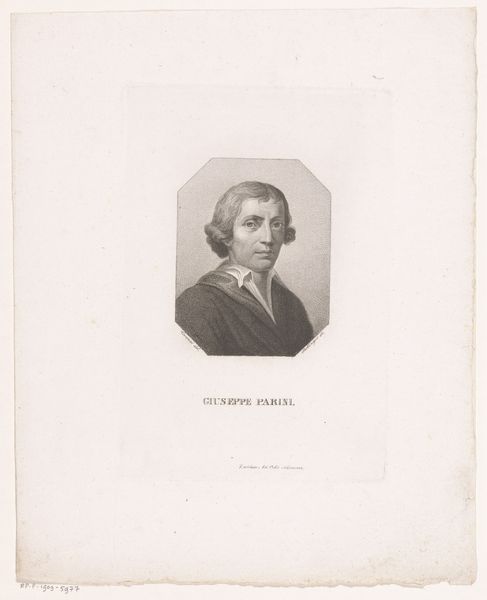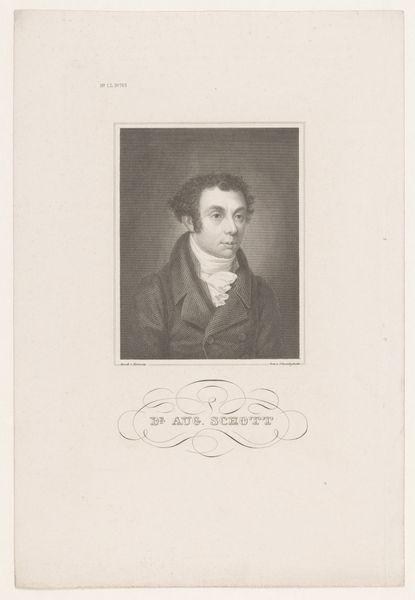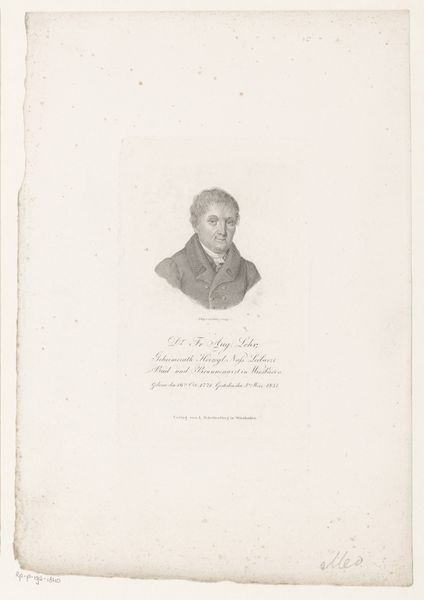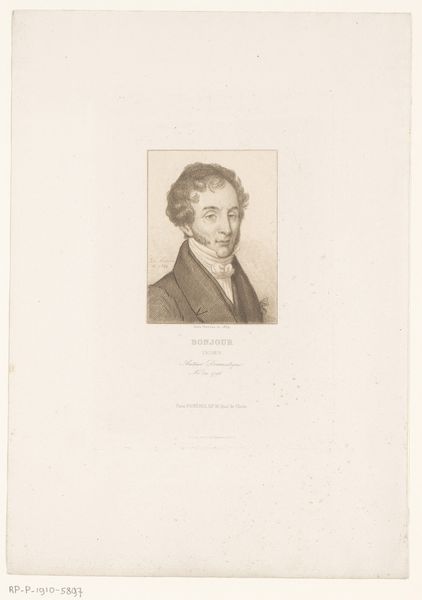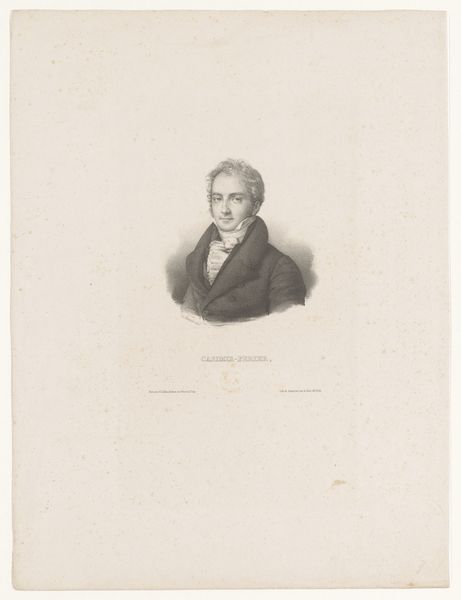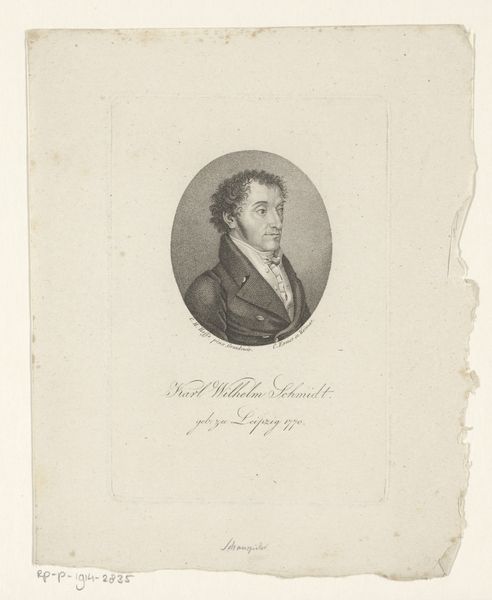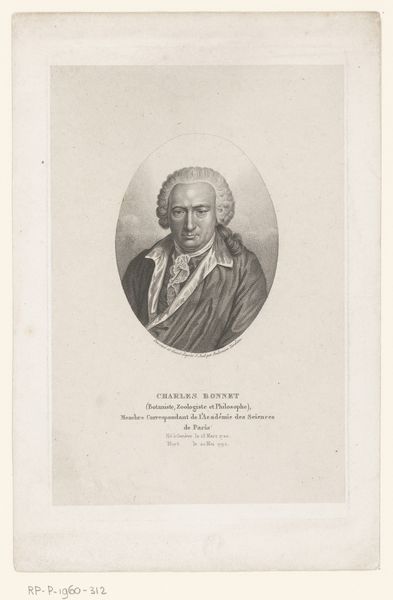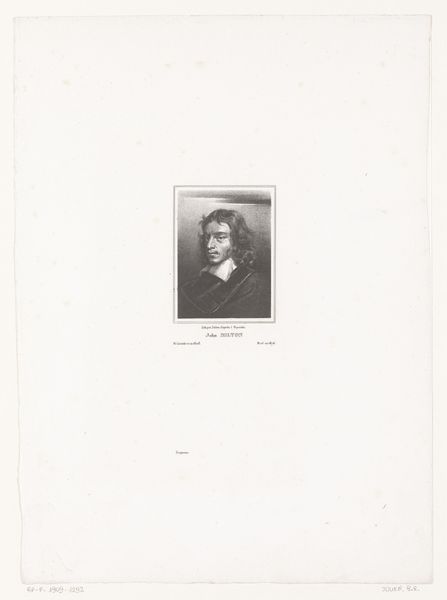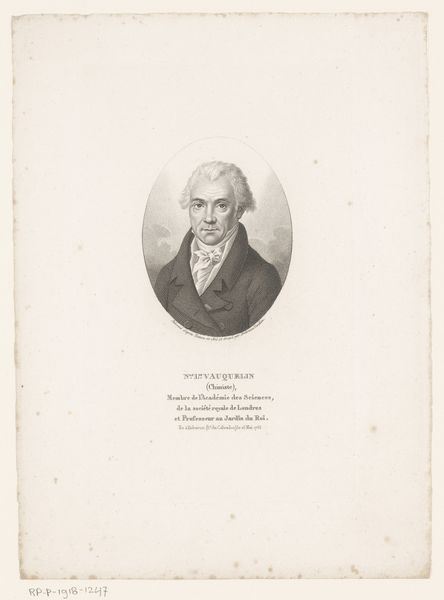
print, engraving
#
portrait
#
aged paper
#
yellowing background
#
photo restoration
# print
#
light coloured
#
old engraving style
#
white palette
#
history-painting
#
engraving
#
realism
Dimensions: height 190 mm, width 120 mm
Copyright: Rijks Museum: Open Domain
Curator: Well, that's a striking piece. Something about it feels almost ghostly, you know? Editor: Indeed. We are looking at a print of a portrait of Thomas Paine. While the piece is attributed to Albert Schule, its precise dating remains somewhere between 1811 and 1875. Look closely; you’ll note it’s an engraving. Curator: The cross-hatching creates this incredible texture, almost like you could reach out and feel the fabric of his coat. It is also, maybe because it's a copy, a bit… flat. What I like about the flatness is the even illumination across his face – no drama. Editor: Notice how the image is presented: the octagonal border crops him, but only gently. That very act declares it a constructed artifact – made with care and labor, designed for dissemination. The materiality is very present. Curator: I'm struck by his gaze; direct but not confrontational. I wonder what he was thinking just as the artist captured this moment. Or perhaps, as it's an engraving after a painting, captured something else – time maybe? I bet the making of a copy introduced a distance, something to feel almost viscerally. Editor: And considering Paine's radical ideas about society and government, the labor involved in reproducing this portrait, in making it available to a wider public, reinforces those notions of democratic access to information and representation. The work is made with tools and technology that enabled replication, scaling of visual data. It embodies a kind of visual activism. Curator: Perhaps it flattens Paine precisely to distribute the ideas, and that, counterintuitively, humanizes the revolutionary. But that yellowish paper is not so nice! Does it degrade a good thing, I wonder. I like what remains more than what might have been. Editor: Think about what it means to own or distribute this kind of print during a period of intense social and political change. How did people consume imagery like this and use this object? We’ll never know! Curator: Ultimately, it gives one pause. Makes me feel how portraits like these have this amazing and terrifying staying power. Editor: Absolutely. These visual objects provide insight to systems of production and distribution. In its capacity, an object can influence thought by existing as its accessible manifestation. Thank you.
Comments
No comments
Be the first to comment and join the conversation on the ultimate creative platform.
